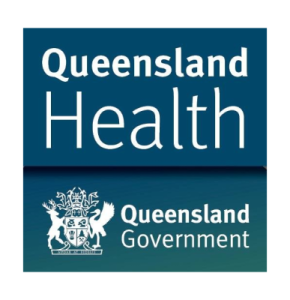Using portfolio & programme management frameworks to ‘close the gap’ across Indigenous health policy.
Client

Industry
Health Services and Hospitals, Public Sector, First Nations Peoples
Our Role
Establish end-to-end portfolio and programme management frameworks and improve delivery capability maturity
Services
Agile Assurance Reviews, Portfolio Management, Programme Management
Overview.
Improve the health outcomes of Indigenous Australians by ‘closing the gap’ between Indigenous and non-Indigenous Australian communities.
The Queensland Health unit of Indigenous Health Policy, was at the time responsible for the development and implementation of Aboriginal and Torres Strait Islander health policies, to improve the health outcomes of indigenous Australians and ‘close the gap’ between indigenous and non- indigenous Australian health.
‘Closing the Gap’ refers to reducing the gap in inequalities that exist between Aboriginal and Torres Strait Islander and non-Aboriginal and Torres Strait Islander Australians. Under the National Indigenous Reform Agreement the Council of Australian Governments committed to achieving six targets for ‘closing the gap’ in health, education and employment outcomes.
Business need.
Programme and project delivery frameworks that are fit-for-purpose and support robust and effective governance and greatly improve project success for Indigenous Australian communities.
The Indigenous Health Policy business unit, which consisted of 65 personnel spread across the State, had an immediate need to improve the way they initiated, delivered, reported upon and prioritised critical health policy and technology enabled service delivery projects.
The business unit needed the capability to select and prioritise projects, and move from a ‘reactive’ environment to having the capability to be proactive in developing and delivery defined programmes of work, with well-structured, supported and defined enabling projects. The business unit needed to move from business, policy and technology risks being managed on an ‘ad-hoc basis’, through a coordinated approach to reporting on project status, and the ability to manage the utilisation of resources across the State.
The business unit had and immediate internal capability uplift need to move team members quickly from “acting as coordinators” to directing and managing project managers in addition to internal project management and delivery capability needs. All projects were aligned to time sensitive Commonwealth government funding, which also required significant reporting to ensure funding streams remained secure for the State of Queensland and its Indigenous health policies and the communities they support.
Challenges.
Excellence in Indigenous Health Policy needs to be supported by better project management.
The Indigenous Health Unit had a low maturity knowledge of project management and delivery, with leaders and team members being specialists in the specific areas of Indigenous health policy and community based service delivery. As part of a machinery of government change and consolidation, the business unit became responsible for both project budgets and the delivery of outcomes to regional, rural and remote Indigenous health services and the overarching policies that facilitated health services delivery.
The business unit did not have an inhouse methodology, and did not possess the capability to adopt the newly implemented whole-of-government project delivery methods and frameworks. The business unit team had very limited exposure to business and technology enabled project delivery, and were not support by a common enterprise toolset or target training for maturity uplift. The government of the day had a no-later-than deadline for the delivery of politically sensitive (and Commonwealth funded) health policy initiatives across all Indigenous Peoples and communities in the State. Project prioritisation was unable to realised, and often political preferences replaced wise project selection.
Results.
Transformation is necessary. It is also hard. Sydney Metro are well equipped to support its portfolio transformation.
Programme & Project Management Improvement
PM Solutions established a project manager and executive mentoring programme. The PM Solutions senior lead consultant managed the development of programme and project level templates, project and risk management method customisation and adoption and coordinated the establishment, management and distribution of programme level highlight reporting and bi-weekly project status reports.
The uplift in internal resource and functional capability, delivered a repeatable and coordinated approach to project management practices, templates, methods and tools, was an immediately evidenced through a significant improvement of project outcomes, directly attributable to the implemented and adopted methods, tools, risks mitigation and the management of internal capabilities.

3PMO Establishment
PM Solutions worked directly with existing policy programme managers and the Executive Director to develop a stream line and cost effect (P3O® based) projects management office. The PMO supported a robust delivery method and softly introduced a customised whole-of-government adopted PRINCE2® methodology, complimenting newly established internal capabilities.
The newly established PMO coordinated project undertakings and worked with executive management to build a prioritisation matrix, which resulted in a vastly increased capability to forward plan resource budgets for future financial years and meet the reporting needs of the Commonwealth Government funding model.
Over a 9-month period, the business unit project delivery and portfolio management moved from a zero maturity level to level two, when evaluated against P3M3® PMO specific elements and P30®.
